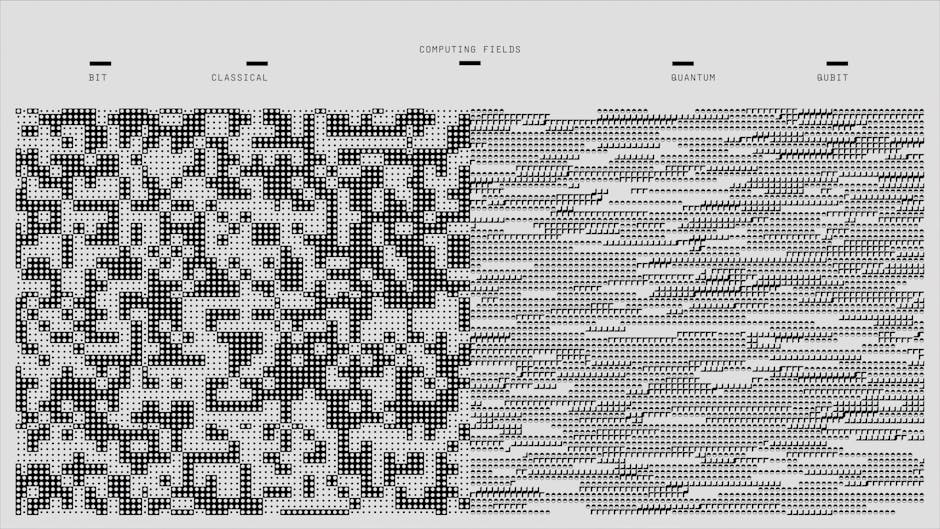Introduction
Quantum computing isn’t magic. It’s a new way of processing information based on the principles of quantum mechanics—think weird stuff like superposition and entanglement. Instead of bits that are either 0 or 1, quantum bits (qubits) can be both at once. That means quantum computers can crunch certain types of problems way faster than classical machines ever could. Not all tasks—just some very hard ones.
This tech isn’t stuck in labs anymore. IBM, Google, and startups like IonQ and Rigetti are already shipping prototype systems. Governments are investing billions. And enterprise experiments are picking up speed—especially in finance, pharma, and logistics.
For software developers, this means it’s time to tune in. You don’t need to be a physicist, but you do need to understand how quantum could reshape complex algorithms, security standards, and even how platforms are architected. The sooner developers wrap their heads around it, the more prepared they’ll be when the quantum wave hits production-level applications.
Quantum vs. Classical Computing: The Core Differences
Let’s start at the root: classical computers run on bits. Each bit is either a 0 or a 1. Everything—from cat videos to banking software—is built on that foundation of binary certainty. Quantum computing, on the other hand, runs on qubits (quantum bits), which can be both 0 and 1 at the same time. This oddball feature is called superposition. It lets quantum systems process many possibilities at once, not one step at a time like classical machines.
Then there’s entanglement. When qubits are entangled, their states are linked—even across distances. Change one, and the other reacts. This allows for wild levels of parallelism in problem-solving, and opens up coordination tricks that classical systems just can’t touch. It’s not magic, just physics doing its thing differently.
So why should developers care? Because quantum computing can crack problems that stomp classical systems: think factoring huge numbers for cryptography, modeling molecules for new drugs, optimizing complex logistics, or simulating quantum systems in material science. These aren’t just niche tasks—they’re the backbone of entire industries. The challenge now is learning how to write for machines that don’t think the way we’re used to. Code structure shifts fast when your logic gates start behaving probabilistically.
Bottom line: if bits gave us digital life, qubits are about to help us tackle what was previously labeled impossible.
New Paradigms in Programming
Quantum computers don’t follow the rules of classical machines. That means traditional programming languages—C++, Java, Python in most cases—just don’t mesh with the logic of quantum bits. Qubits act differently; they deal in probabilities, entanglement, and state superposition. That’s a long way from yes/no, true/false logic. Trying to write quantum programs with classical tools is like trying to write a novel using only numbers. You need purpose-built languages that speak quantum’s native tongue.
Enter Q#, Qiskit, and Cirq—the frontrunners in a new wave of quantum programming frameworks. Microsoft’s Q# is built to sit inside the .NET ecosystem, offering a strongly-typed, high-level language to define quantum algorithms and manage quantum/classical code interaction. Qiskit, from IBM, is Python-based and easier to jump into for developers already in the Python world. It’s massive in the research community, with a growing suite of tools for circuit simulation and hardware integration. Cirq, led by Google, is focused more on low-level circuit design, providing better control over gate operations on near-term hardware.
You don’t need access to a full-blown quantum computer to start. Simulators for all of these platforms are available now, often open source. You can build, test, and understand quantum circuits on your existing laptop. It’s hands-on learning without a lab coat. Best part: none of these toolkits expect you to be a quantum physicist. But stepping into their world might make you code like one.
Quantum-Ready Use Cases
Quantum computing isn’t just flexing its muscles in labs—it’s starting to reshape real-world software problems. Three areas stand out: cryptography, large-scale optimization, and industry interest at the startup and enterprise level.
Let’s start with security. Post-quantum cryptography is a big deal. Today’s encryption systems (RSA, ECC) depend on problems that quantum computers could eventually crack in hours. That’s not sci-fi paranoia—it’s a real threat on the horizon. NIST is already setting standards for new quantum-resistant algorithms. Devs who work in security or handle sensitive data should be watching this space closely.
Then there’s optimization. Quantum algorithms are showing promise in solving brutally complex problems faster—think supply chain logistics, portfolio balancing, or training large-scale AI models. In the classical world, these problems scale horribly. Quantum offers a shot at something cleaner, even if it’s still early.
Investment is pouring in. Startups like Zapata and Quantinuum are building platforms specifically for quantum workflows. Major tech players—Google, IBM, AWS—have moved from experimentation to monetizable APIs and cloud offerings. If you’re a developer, the message is clear: this isn’t vaporware. It’s a slow burn, but it’s coming.
Quantum use cases won’t flip a switch overnight, but the smart move is to watch, learn, and see where your stack might intersect. The earlier you’ve got a point of view, the better you can ride the shift.
The Software Stack in a Quantum Future
Quantum computing will not replace classical computing. At least, not anytime soon. Instead, what we’re looking at is a hybrid future—one where traditional software stacks evolve to include quantum capabilities where they make sense.
In practice, that could mean classical systems handle everyday logic and UI, while quantum processors take on specific tasks like optimization or molecular modeling. But that interplay needs structure. So we’re seeing early frameworks emerge that can route tasks between quantum and classical layers intelligently. Think of it as runtime orchestration between very different machines.
APIs will play a central role here. They’ll abstract the complexity, letting software call on quantum functions without needing to speak quantum-native languages. This API-first architecture can help developers plug quantum features into existing workflows without gutting their stack.
Hybrid models are already in testing. Platforms like IBM’s Qiskit Runtime and Microsoft’s Azure Quantum are baking in ways to split workloads between classical and quantum processors. The edge? Real-world usefulness. Until quantum becomes more stable and scalable, the smart move is integration—not replacement.
So, software architecture in a quantum future? Less science fiction, more systems thinking. Build for both. Optimize where it counts. Let APIs do the dirty work.
Skills Developers Need to Stay Ahead
You don’t need to be Schrödinger to get into quantum computing, but you do need to know your basics.
At the core, it helps to have a handle on a few fundamental quantum principles like superposition (a qubit existing in multiple states) and entanglement (qubits being linked in behavior, regardless of distance). These aren’t just theory—they show up when you’re writing quantum algorithms or simulating quantum circuits. Think of it like learning how memory works in classical computing; not flashy, but essential.
Now, let’s talk math. Linear algebra becomes your best friend here. Matrices, vectors, complex numbers—they’re the skeleton key to understanding how qubits behave and how algorithms operate at a quantum level. If you slept through matrix math in college, now’s the time to wake up. Even basic fluency makes a difference when you’re trying to read or write quantum code.
Luckily, you’re not on your own. Open source projects like IBM’s Qiskit and Google’s Cirq offer hands-on ways to play with quantum logic using Python. They each come with solid documentation, simulators, and community support. Microsoft’s Q# gives a more structured approach too if you want to build full-stack quantum solutions. And if you’re starting fresh, platforms like Brilliant, QuTiP, and Quantum Country offer bite-size learning geared at developers, not physicists.
Bottom line: quantum’s not magic—it’s math and logic with different rules. Learn just enough to build, test, and brainstorm alongside what’s next.
Roadblocks to Adoption
Quantum computing is promising, but it’s far from plug-and-play. First, the hardware is delicate and highly unstable. Qubits are fragile—susceptible to noise, temperature, and even cosmic rays. Most quantum machines still need extreme cooling (we’re talking near absolute zero), and even a small fluctuation can crash a computation. In other words, don’t expect to run quantum code from your laptop anytime soon.
Then there’s the programming hurdle. Writing quantum algorithms is a shift from everything developers are used to. Classical logic doesn’t translate cleanly. Tools like Qiskit and Cirq help, but debugging a quantum application is hardly straightforward. You’re not just tracing logic errors—you’re interpreting probabilistic outcomes and entangled states. It’s not just harder; it’s different.
And let’s face it—there aren’t enough people who can bridge the gap. Talent is scarce. There’s a small group of researchers and developers who “speak quantum”, but not nearly enough to meet growing demand. Bootcamps and open-source projects are starting to fill the gap, but we’re still early. If you’re already learning, you’re ahead.
Quantum is coming, but the path isn’t smooth. Hardware, software, and talent need time to catch up.
Sustainable Quantum?
Quantum computing isn’t just about solving problems faster—it may also be the key to doing it greener. Unlike traditional high-performance computing (HPC) systems that burn through megawatts of electricity, quantum hardware has the potential to do more with less. Quantum processors, at their core, execute certain computations exponentially faster, which could reduce overall energy demand for specific tasks, if and when the hardware matures.
That said, quantum computers have their own challenges. Maintaining quantum coherence requires ultra-low temperatures—often just a few millikelvins above absolute zero. This calls for serious cooling infrastructure, often using dilution refrigerators and elaborate cryogenic setups. That counterbalances some of the energy savings, at least for now.
But green innovation is already on the move. Research teams and startups are exploring sustainable materials, compact cooling systems, and even photonic quantum processors that could operate at room temperature. Data centers hosting quantum and hybrid systems are also thinking ahead—designing architectures with lower carbon footprints and smarter energy allocation.
This is an early-stage industry, but the push for sustainable quantum computing is gaining traction alongside technical development. For a broader look at how quantum efforts intersect with eco-conscious tech, check out our in-depth piece: Sustainability in Tech — Green Innovations Leading the Way.
Conclusion: When to Dive In
If you’re a developer thinking about quantum computing, here’s the straight answer: don’t drop everything, but don’t ignore it either. You don’t need to master qubit states tomorrow. What you do need is a plan grounded in reality.
Start with the basics—build a working knowledge of quantum concepts. No need for a PhD; just understand how quantum logic flips the classical script. Explore platforms like Qiskit or Cirq through tutorials or GitHub projects. You won’t write production-ready quantum code yet, but you’ll build the muscle memory.
Next, follow real use cases. Look for signals in industries you care about—finance, AI, logistics—where quantum is finding a toehold. Understand the problems quantum aims to solve that classical can’t. This keeps your attention sharp without getting sucked into the hype vacuum.
Think of this as planting seeds. Keep tabs on the ecosystem. Learn the lingo. Play with a simulator. You don’t need answers yet. Just curiosity, consistency, and a bit of patience. The future tends to reward developers who pace themselves and stay ready—especially when the rules of computing are being rewritten.


 Tyler Mapleronsic, a contributing author at wbsoftwarement specializes in full-stack development and cloud technologies. His articles blend technical expertise with real-world applications, guiding readers through complex coding challenges and innovative software practices. Tyler’s goal is to make technology more accessible and impactful for every developer.
Tyler Mapleronsic, a contributing author at wbsoftwarement specializes in full-stack development and cloud technologies. His articles blend technical expertise with real-world applications, guiding readers through complex coding challenges and innovative software practices. Tyler’s goal is to make technology more accessible and impactful for every developer.

